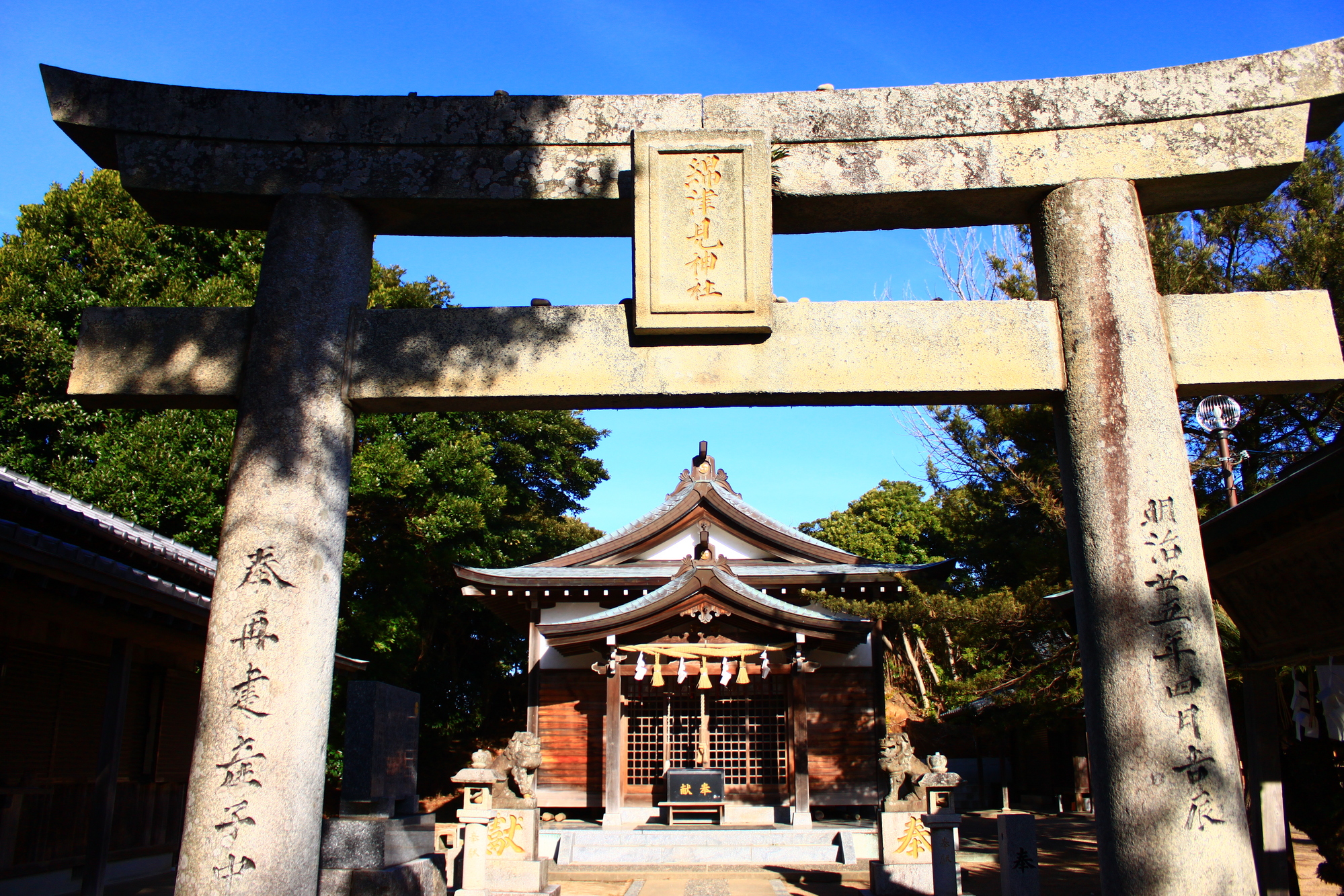Japan’s oldest book, the Kojiki. It dramatically illustrates the history of Japan from the beginning of the world, the appearance of the deities, to the Imperial succession. Behind each impressive episode, there exist numerous “mysteries” that are yet to be solved even today. By exploring each, we will think about the origin of Japanese beliefs and culture.

Watazumi-jinja Shrine, where a legend of Ryugu has been told since old times.
What is the meaning of sachi in the story of Umisachibiko and Yamasachibiko?
Ninigi-no-Mikoto, a descendant of the gods, and Konohana-no-sakuyabime had three baby boys. The first son was Hoderi, the second son was Hosuseri, and the third son was Hoori. The first son’s job was to procure goods from the sea, as “Umisachibiko,” while the third son’s job was to procure goods from the mountains, as “Yamasachibiko.”
The words “Umisachibiko” and “Yamasachibiko” are not proper names per say—they express roles. The word sachi is written as 佐知 in the Kojiki. This may be because the meaning is limited if sachi is written as 幸, which usually means “happiness” or “luck.”
The word sachi refers to something that has spiritual powers. In his role as “Umisachibiko,” and thus as the deity of the bounty of the sea, Umisachibiko catches the sachi (i.e., products) of the sea via a sachi (i.e., a tool) that has spiritual powers. In the case of the deity of the mountains, Yamasachibiko, his role was the same, as pertaining to the mountains. Therefore, originally, it would not be possible for them to exchange roles.
Who was right: The elder brother or the younger brother?
One day, Yamasachibiko asked his elder brother, Umisachibiko, to exchange their sachi (i.e., tools and roles). At first, Umisachibiko refused, but he finally relented to Yamasachibiko’s persistence.
However, in the end, Yamasachibiko could not achieve any success in fishing. Moreover, he lost Umisachibiko’s sachi (i.e., his fishing hook). Yamasachibiko tried to atone for this mistake by making 1,000 fishing hooks and presenting them to Umisachibiko, but his brother refused to forgive him. In a sense, it was natural for Umisachibiko to feel this way, as a sachi is a one-of-a-kind item with great spiritual powers.
Likewise, Yamasachibiko was completely at fault in this case because he persistently demanded that they exchange sachi roles. In the end, the two brothers fought each other, with Umisachibiko subsequently asking Yamasachibiko for forgiveness. Why did all of this occur?
Why did Umisachibiko become the villain in the end?
Yamasachibiko was the deity of the mountains because of his strong bloodline—he is descended from Konohana-no-sakuyabime, the daughter of the mountain god. The importance of this myth is in relaying how Yamasachibiko received the spiritual powers of the sea when undertaking the search for Umisachibiko’s fishing hook.
Yamasachibiko eventually married the daughter of the sea god and ended up fighting Umisachibiko, but ultimately defeated his brother using ball provided by the sea god. By the way, another name of Konohana-no-sakuyabime is “Kamuatatsu-hime.” “Ata” is the name of where the Hayato tribe came from in southern Kyushu. Umisachibiko is considered to be an ancestor of the Hayato. This might be because he is descended from Kamuatatsu-hime.
The eventual obedience of Umisachibiko to Yamasachibiko refers to the obedience of the Hayato tribe to the Imperial Court. For this reason, Umisachibiko is perceived as a villain.
-Kokugakuin University has been selected “as a place for the promotion of the study of the Kojiki” by the private university branding project of the Ministry of Education in 2016.-

published in The Japan News on 25/12/2018
Masahiro TANIGUCHI
Research
Japanese literature of ancient times (Kojiki, Nihon-shoki, topography)
Papers
“The Old Man Says” in izumono-kuni-fudoki(2017/05/10)
Tatenui County and Mount Kannabi in Izumonokuni-fudo-ki : Reading What the Genius Says(Reading)(2009//)

